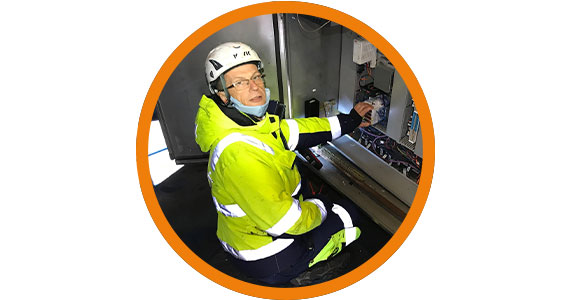Condition monitoring on the energy chain (i.Sense EC. P)
Richard Habering | 13. November 2020
Nowadays, the field of condition monitoring is all-encompassing. There are hardly any things or places that are not permanently monitored. Some people already associate the concept of monitoring with negative aspects from this point on. However, in the field of energy supply, condition monitoring should be a positive, useful, helpful and safe monitoring. The ultimate goal is safety for the user and the machine. Let us rather think positive and smart. Here is a short list of areas where monitoring represents a real added value:
- Tyre pressure sensor
- Rain sensor
- Temperature sensor
- GPS sensor
- Kitchen personal weighing scales
I hope the kitchen scale with its sensors also passed off as a positive association. It is also noticeable that (condition) monitoring is almost impossible without sensors. An energy chain or at least its direct attachments can also be equipped with a wide variety of simple sensors. The huge advantage of this technology is that no additional software or computer is needed. All that is required is electricity, which in most cases is not a problem in an energy chain.
i. Sense – the condition monitoring from igus®.
At igus, the field of condition monitoring runs under the name i. Sense, which is derived from the English “I sense”. Currently the area is divided into 3 possibilities for monitoring.
- EC. P the push/pull force measurement
- EC.B the breakage detection
- CF.P tensile force monitoring with chainflex cables
What is i. Sense EC. P and how does it work?
At the top of the list of the most commonly used sensors to date is the push/pull force measurement. This type of force measurement is mainly used for gliding travels from 15m. This force sensor measures, purely mechanically, the push/pull forces occurring in the energy chain. During the gliding movement of an energy chain, the tensile force acting on the moving end rises or falls depending on its position on the travel. On one side of the travel the moving end must pull the complete weight of the energy chain (end position 1 = high tensile force). If the moving end is on the other side (end position 2) of the travel, the tensile force through the chain is only minimal.

If these, let’s call them force limits, are defined for the appropriate application, the sensor (EC. P Sensor) can be adjusted to it and installed on the moving end. This sensor is then only connected to the EC. P module, which is located in the machine’s control cabinet. If, from this point on, the push/pull forces of the energy chain exceed the set limits for any reason (ice, snow, object, animal or possibly even person in the guide trough), a warning message can be issued or, if desired, the system can be stopped immediately.

This is how easy it is to make your energy chain safe and smart. As always, pictures and especially moving pictures, say more than 1000 blog words.
I hope I can shed some light on an area of condition monitoring and show that the implementation is not difficult or complex.
If you have any further questions, feel free to contact me. I would be happy to assist. Let’s do it.

